Best Tree Choices for Central Texas Fall Color
In Central Texas, the warm autumn days and cool nights can coax some stunning fall colors – if you know where to look! Adding trees that change color can bring a bit of that seasonal magic to your yard. While the fall foliage isn’t as intense here as in other parts of the country, these five trees thrive in Texas and bring bright shades of red, orange, and yellow. So, let’s dive into the top trees for fall color in Central Texas and why they’re worth considering for your landscape.
1. Texas Red Oak
- Fall Color: It’s in the name…Deep reds and bright scarlets.
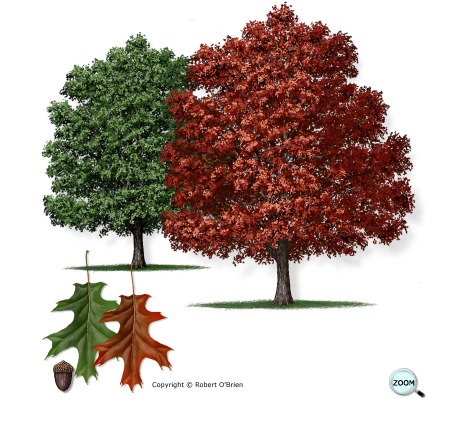
- Why We Love It: The Texas Red Oak is a native that brings reliable color to Central Texas every fall. These trees are hardy and drought-tolerant, making them well-suited for our climate. In the fall, their leaves turn from green to a spectrum of reds and sometimes even purples. They’re a great large shade tree that doesn’t disappoint when it comes to fall flare.
- Growth Tip: Plant in well-drained soil and give it full sun. They grow up to 50 feet tall (that is super tall if you are trying to visualize it), making them a standout feature in any yard.
2. Cedar Elm
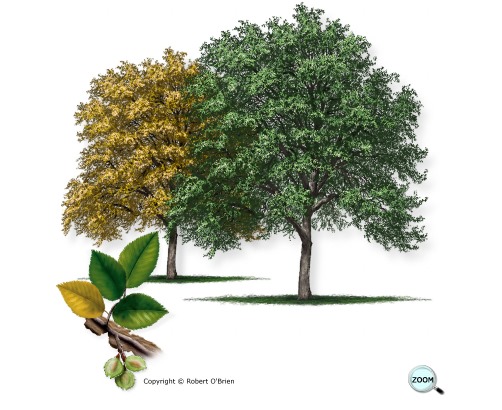
- Fall Color: Soft yellows and golds
- Why We Love It: Cedar Elms are a staple in Texas, known for their resilience and adaptability to our hot, dry conditions. In the fall, they bring a gentle golden-yellow hue to the landscape, offering a lovely contrast to bolder-colored trees. Their small, serrated leaves create a unique texture, making them a great choice for adding depth to your fall palette.
- Bonus: They have beautiful light green leaves in the spring.
- Growth Tip: Cedar Elms are low-maintenance and drought-tolerant, thriving in a range of soil types. They grow best in full sun and can reach heights of around 40-60 feet.
3. Chinese Pistache
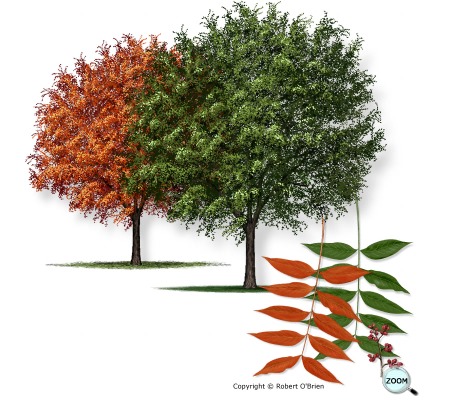
- Fall Color: Bright reds, oranges, and yellows
- Why We Love It: Known for its hardiness and beautiful, reliable fall color, the Chinese Pistache is a top pick for landscapes across Texas. Its vibrant colors make it one of the most colorful choices, and it has a nice, rounded canopy. This is a great tree if you want a manageable size that won’t overwhelm your space.
- Growth Tip: Chinese Pistache is very adaptable and grows well in most soil types. Plant in full sun and give it room to reach its mature size of 25-35 feet.
4. Bradford Pear
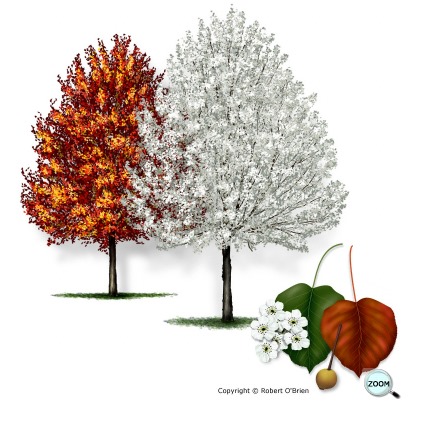
- Fall Color: Bright reds and purples, with occasional orange tones
- Why We Love It: Ornamental Pears, like the Bradford, bring a unique touch to the fall landscape with their brilliant reds and purples. They are compact and shapely, making them a good choice for smaller yards. Their vibrant foliage and spring blossoms add color in both spring and fall, making them a true year-round favorite.
- Bonus: They have beautiful white flowers in the spring. They are also very fast growing compared to most trees.
- Growth Tip: Ornamental Pears prefer full sun and well-drained soil. They generally grow to around 25-35 feet tall, making them ideal for a range of spaces.
5. Bigtooth Maple
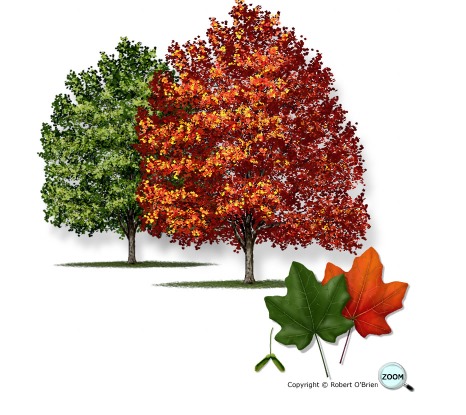
- Fall Color: Bright yellows, oranges, and reds
- Why We Love It: For a truly show stopping display of color, the Bigtooth Maple is a fantastic choice. Though they can be challenging to find, Bigtooth Maples reward Central Texas landscapes with colors that rival those seen in New England. This tree has a smaller stature compared to others on this list, making it ideal for smaller spaces.
- Growth Tip: Bigtooth Maples prefer slightly cooler, moist environments, so plant them in a shady or partially shady area. They can grow to about 30-50 feet in Central Texas conditions.
Planting a few of these fall-favorite trees in your yard can add vibrant splashes of color each autumn, giving you something to look forward to as the days get shorter.
And while Central Texas may not have the same fall color displays as the northern states, these trees prove that a little planning and the right species can bring those beautiful hues home.
So, which one will you choose for your fall landscape transformation?
We get a lot of our information and pictures from the Austin Tree Expert site.
We got all of our pictures from the work of Robert O’Brien…Robert if you read this…we love you.



